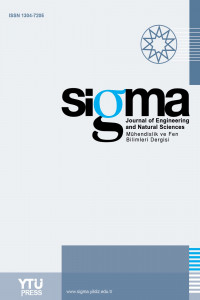ADVANCED OXIDATION OF A NONIONIC SURFACTANT: EXAMINATION OF THE DEGRADATION PRODUCTS – ACUTE TOXICITY RELATIONSHIP
Abstract
Degradation products formed during removal of an aqueous nonylphenol ethoxylate compound (NP-10) by the H2O2/UV-C, Fenton (Fe2+/H2O2) and photo-Fenton (Fe2+/H2O2/UV) advanced oxidation processes and their relationship with the acute toxicity toward Vibrio fischeri photobacteria were investigated. Polyethylene glycols with 3-8 ethoxy units, aldehydes and carboxylic acids were identified as the primary degradation products of the studied treatment processes. A strong correlation was found between the acute toxicity and the aldehydes and carboxylic acids formed during the H2O2/UV-C and photo-Fenton processes. Higher concentrations of aldehydes and carboxylic acids in the H2O2/UV-C process (1.24 and 32 mg L-1, respectively) than in the photo-Fenton oxidation (0.36 and 21 mg L-1, respectively) were speculated to cause the higher inhibitory effect (24% relative inhibition) observed in the H2O2/UV-C process. The Fenton process was rather inefficient for the removal of NP-10 (20% removal), resulting in the generation of only low concentrations of degradation products (0.14 mg L-1 aldehyde and 4.58 mg L-1 carboxylic acid) and a residual toxicity (10% relative inhibition) nearly at the same level with that of the untreated pollutant (9% relative inhibition). A positive relationship was evidenced between the concentration of degradation products and the level of acute toxicity.
Keywords
Acute toxicity degradation products nonylphenol decaethoxylate the Fenton process the H2O2/UV-C process the photo-Fenton process
References
- [1] Chiu T.Y., Paterakis N., Cartmell E., Scrimshaw, M.D., Lester, J.N., “A critical review of the formation of mono- and dicarboxylated metabolic intermediates of alkylphenol polyethoxylates during wastewater treatment and their environmental significance”, Critical Reviews in Environmental Science and Technology, 40, 3, 199-238, 2010.
- [2] David A., Fenet H., Gomez E., “Alkylphenols in marine environments: Distribution monitoring strategies and detection considerations”, Marine Pollution Bulletin, 58, 7, 953-960, 2009.
- [3] Brand N., Mailhot G., Bolte M., “Degradation photoinduced by Fe(III): Method of alkylphenol ethoxylates removal in water”, Environmental Science and Technology, 32, 18, 2715-2720, 1998.
- [4] Karahan Ö., Olmez-Hanci T., Arslan-Alaton I., Orhon, D., “Modelling biodegradation of nonylphenol ethoxylate in acclimated and non-acclimated microbial cultures”, Bioresource Technology, 101, 21, 8058-8066, 2010.
- [5] Arslan-Alaton I., Olmez-Hanci T., Shayin S., “H2O2/UV-C treatment of textile preparation wastewater: Kinetic investigation on alternative combinations of commercial textile preparation auxiliaries”, Environmental Technology, 33, 13, 1531-1537, 2012.
- [6] Bekbolet M., Çınar Z., Kılıç M., Uyguner, C.S., Minero, C., Pelizzetti, E., “Photocatalytic oxidation of dinitronaphthalenes: Theory and experiment”, Chemosphere, 75, 8, 1008-1014, 2009.
- [7] Karci A., Arslan-Alaton I., Olmez-Hanci T., Bekbölet, M., “Transformation of 2, 4-dichlorophenol by H2O2/UV-C, Fenton and photo-Fenton processes: Oxidation products and toxicity evolution”, Journal of Photochemistry and Photobiology A: Chemistry, 230, 1, 65-73, 2012.
- [8] Ledakowicz S., Perkowski J., Bulska A., Jamroz, T., Sencio, B., “Ozonation impact on degradation and toxicity of non-ionic surfactants”, Ozone: Science and Engineering, 27, 6, 437- 445, 2005.
- [9] Lenz K., Beck V., Fuerhacker M., “Behaviour of bisphenol A (BPA), 4-nonylphenol (4-NP) and 4-nonylphenol ethoxylates (4-NP1EO, 4-NP2EO) in oxidative water treatment processes”, Water Science and Technology, 50, 5, 141-147, 2004.
- [10] Rizzo L., “Bioassays as a tool for evaluating advanced oxidation processes in water and wastewater treatment”, Water Research, 45, 15, 4311-4340, 2011.
- [11] Nicole I., de Laat J., Dore M., Duguet, J.P., Bonnel, C., “Use of UV-radiation in water treatment – Measurement of photonic flux by hydrogen-peroxide actinometry”, Water Research, 24, 2, 157-168, 1990.
- [12] Nash T., “The colorimetric estimation of formaldehyde by means of the Hantzsch Reaction”, Biochemical Journal, 55, 3, 416-421, 1953.
- [13] Wang X., Miao X.-R., Li Z.-M., Deng, W.-L., “Fabrication of microporous hollow silica spheres templated by NP-10 micelles without calcinations”, Applied Surface Science, 257, 7, 2481-2488, 2011.
- [14] Kong L., Lemley A.T., “Effect of nonionic surfactants on the oxidation of carbaryl by anodic Fenton treatment”, Water Research, 41, 12, 2794-2802, 2007.
- [15] Castillo M., Peñuela G., Barcelό D., “Identification of photocatalytic degradation products of non-ionic polyethoxylated surfactants in wastewaters by solid-phase extraction followed by liquid chromatography-mass spectrometric detection”, Fresenius’ Journal of Analytical Chemistry, 369, 7-8, 620-628, 2001.
- [16] Petrovic M., Gehringer P., Eschweiler H., Barceló, D., “LC-MS-(MS) determination of oxidative degradation products of nonylphenol ethoxylates, carboxylates and nonylphenols in water”, Water Science and Technology, 50, 5, 227-234, 2004.
- [17] Petrovic M., Gehringer P., Eschweiler H., Barceló, D., “Radiolytic decomposition of multi-class surfactants and their biotransformation products in sewage treatment plant effluents”, Chemosphere, 66, 1, 114-122, 2007.
- [18] Calza P., Sakkas V.A., Medana C., Baiocchi, C., Dimou, A., Pelizzetti, E., Albanis, T., “Photocatalytic degradation study of diclofenac over aqueous TiO2 suspensions”, Applied Catalysis B: Environmental, 67, 3-4, 197-205, 2006.
- [19] Wu Z., Zhou M., “Partial degradation of phenol by advanced electrochemical oxidation process”, Environmental Science and Technology, 35, 13, 2698-2703, 2001.
- [20] Farré M., García M.-J., Tirapu L., Ginebreda, A., Barceló, D., “Wastewater toxicity screening of non-ionic surfactants by Toxalert® and Microtox® bioluminescence inhibition assays”, Analytica Chimica Acta, 427, 2, 181-189, 2001.
- [21] Vighi M., Migliorati S., Monti G.S., “Toxicity on the luminescent bacterium Vibrio fischeri (Beijerinck). I: QSAR equation for narcotics and polar narcotics”, Ecotoxicology and Environmental Safety, 72, 1, 154-161, 2009.
- [22] Pintar A., Besson M., Gallezot P., Gibert, J., Martin, D., “Toxicity to Daphnia magna and Vibrio fischeri of Kraft bleach plant effluents treated by catalytic wet-air oxidation”, Water Research, 38, 2, 289-300, 2004.
Details
| Primary Language | English |
|---|---|
| Subjects | Environmental Engineering |
| Journal Section | Research Articles |
| Authors | |
| Publication Date | December 1, 2013 |
| Submission Date | April 4, 2013 |
| Published in Issue | Year 2013 Volume: 31 Issue: 4 |
IMPORTANT NOTE: JOURNAL SUBMISSION LINK https://eds.yildiz.edu.tr/sigma/

